As Ian suggested, this was a much unappreciated strength of Tillinghast. I think he built many great green complexes on his par fives, and employed some of his most challenging "tiering" on these putting surfaces to demand accuracy on the approach. This in turn required much thought for the second shot. Lastly, I think he did a great job of making the second shot semi blind to add an element of doubt for the player.
I've posted this before, but I think 3 East at Ridgewood is a great example of this.
The green angles left to right and has three distinct landing areas, each requiring great accurracy to hit.
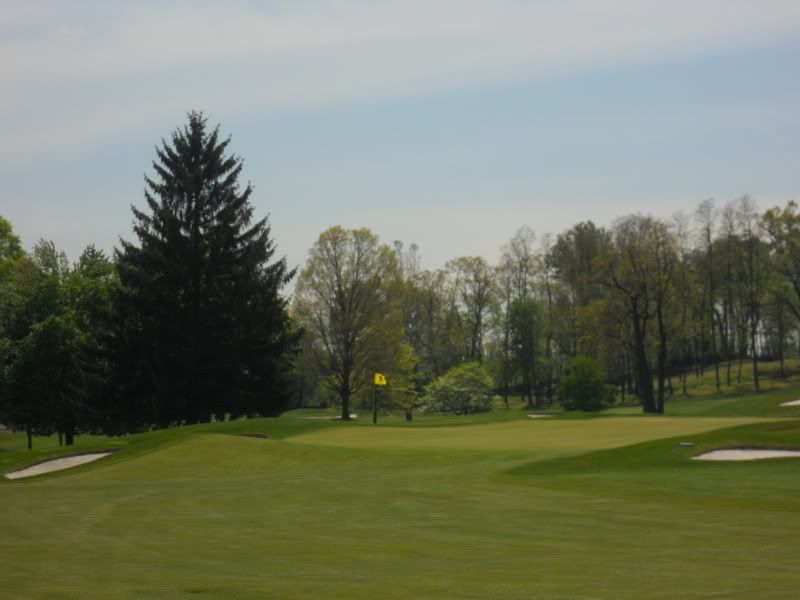
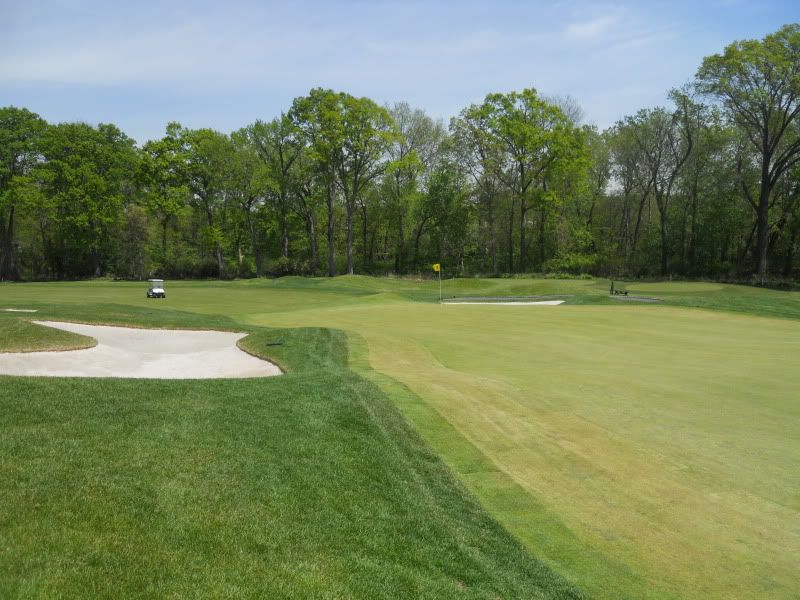
A ball that comes to rest on the wrong landing area takes birdie out of the equation and makes a three-putt quite likely. This next photo shows the ideal line of attack.
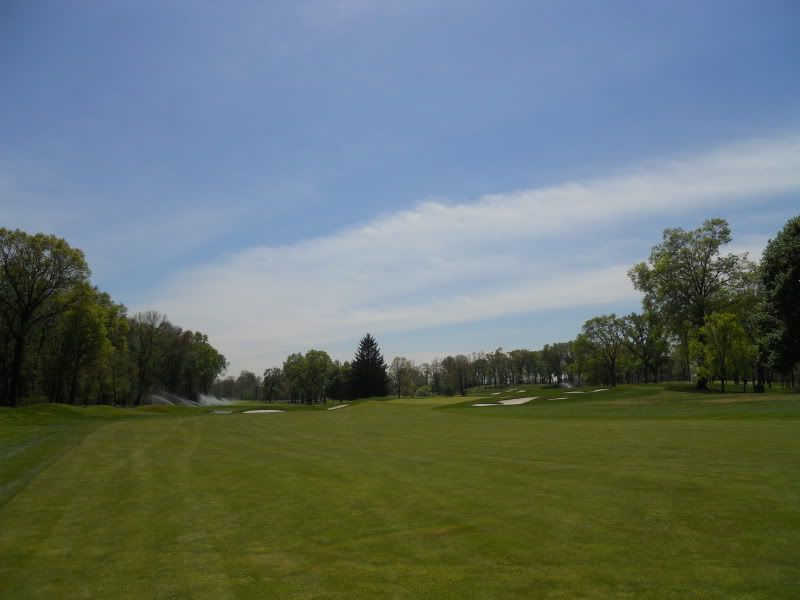
Obviously, you do not want to miss your second shot to the right. But Tillinghast used a very modest change in elevation to obscure the second shot landing area. Somehow the player is tempted to aim at the pin in the distance, but this is definitely the wrong line.
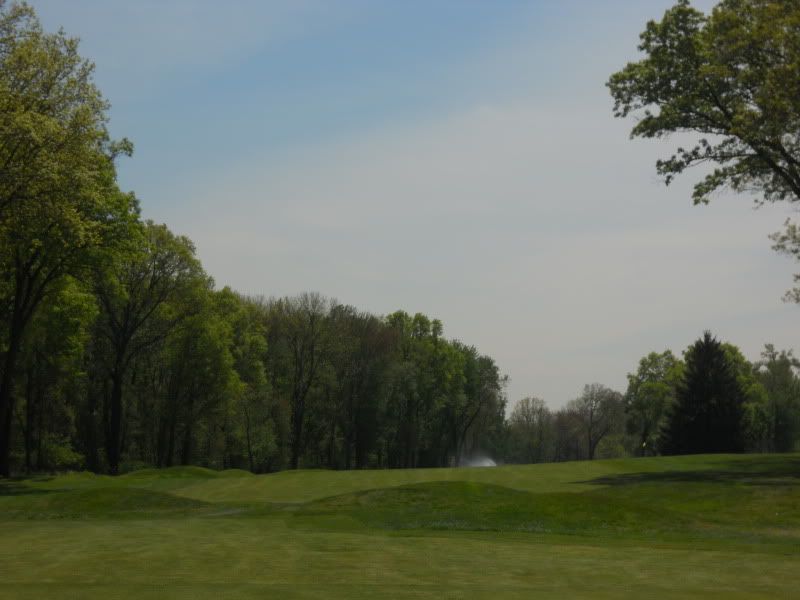
The last design tool that Tilly employed here was the use of mounding at the end of the landing area.From the championship tees, the maximum you can hit your drive is about 290. From the regular tees, I'd say it it is 270.
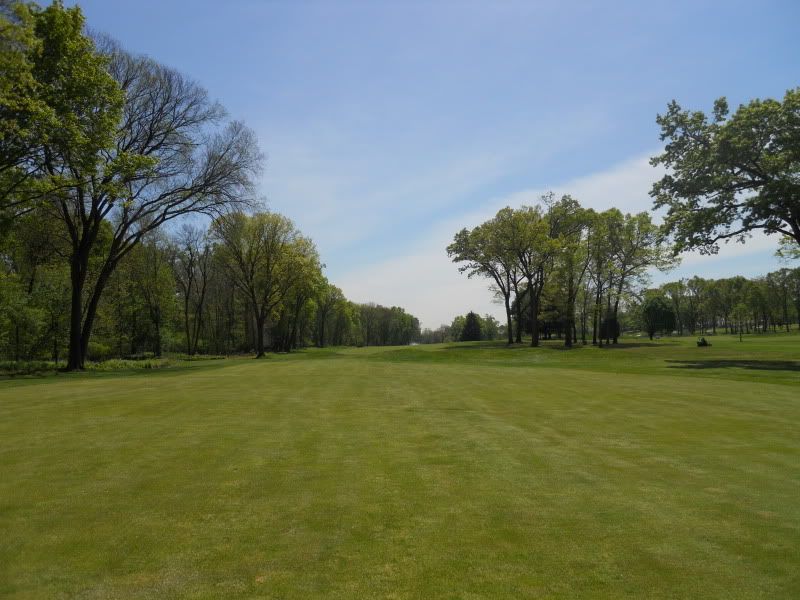
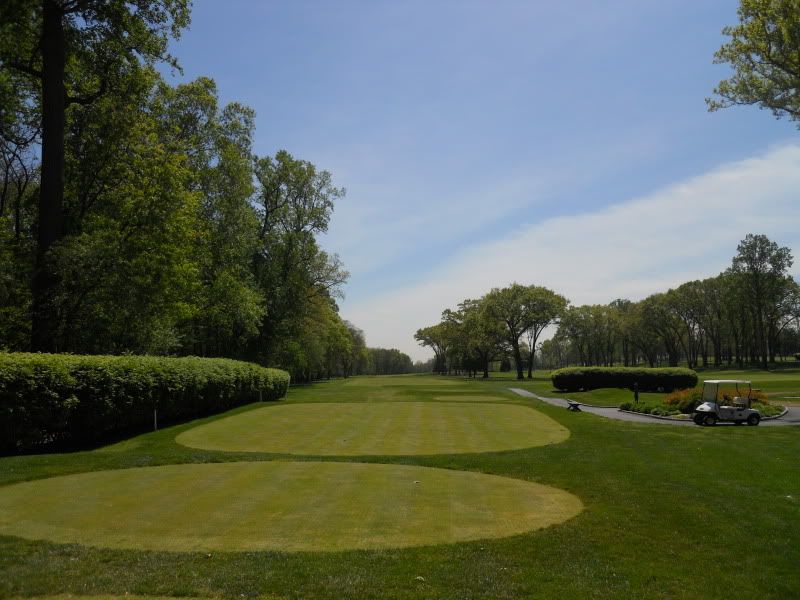
This is a birdie hole if you play intelligently and are very accurate with your wedges. But if you try to overpower the hole, it is so easy to walk away with a frustrating bogey or worse.
This is a great hole designed on a very ordinary piece of land. For me, this typifies Tinnghast's genius.